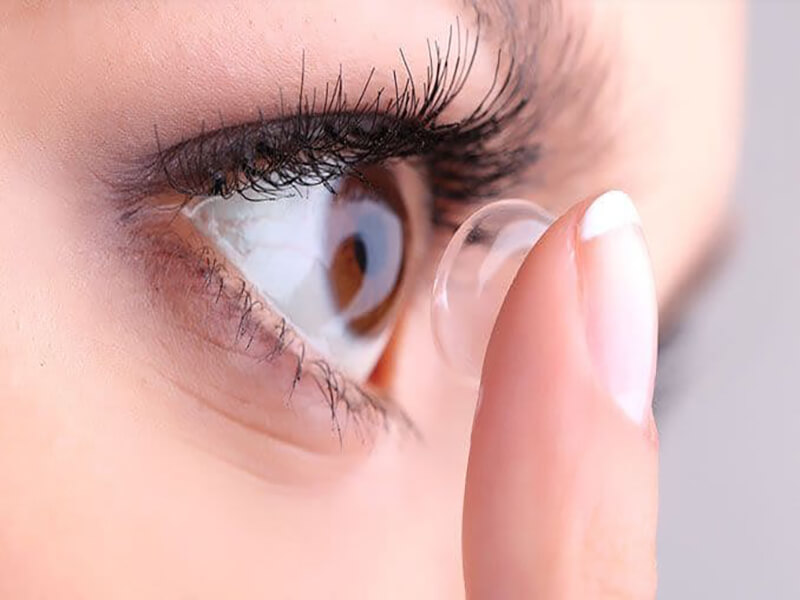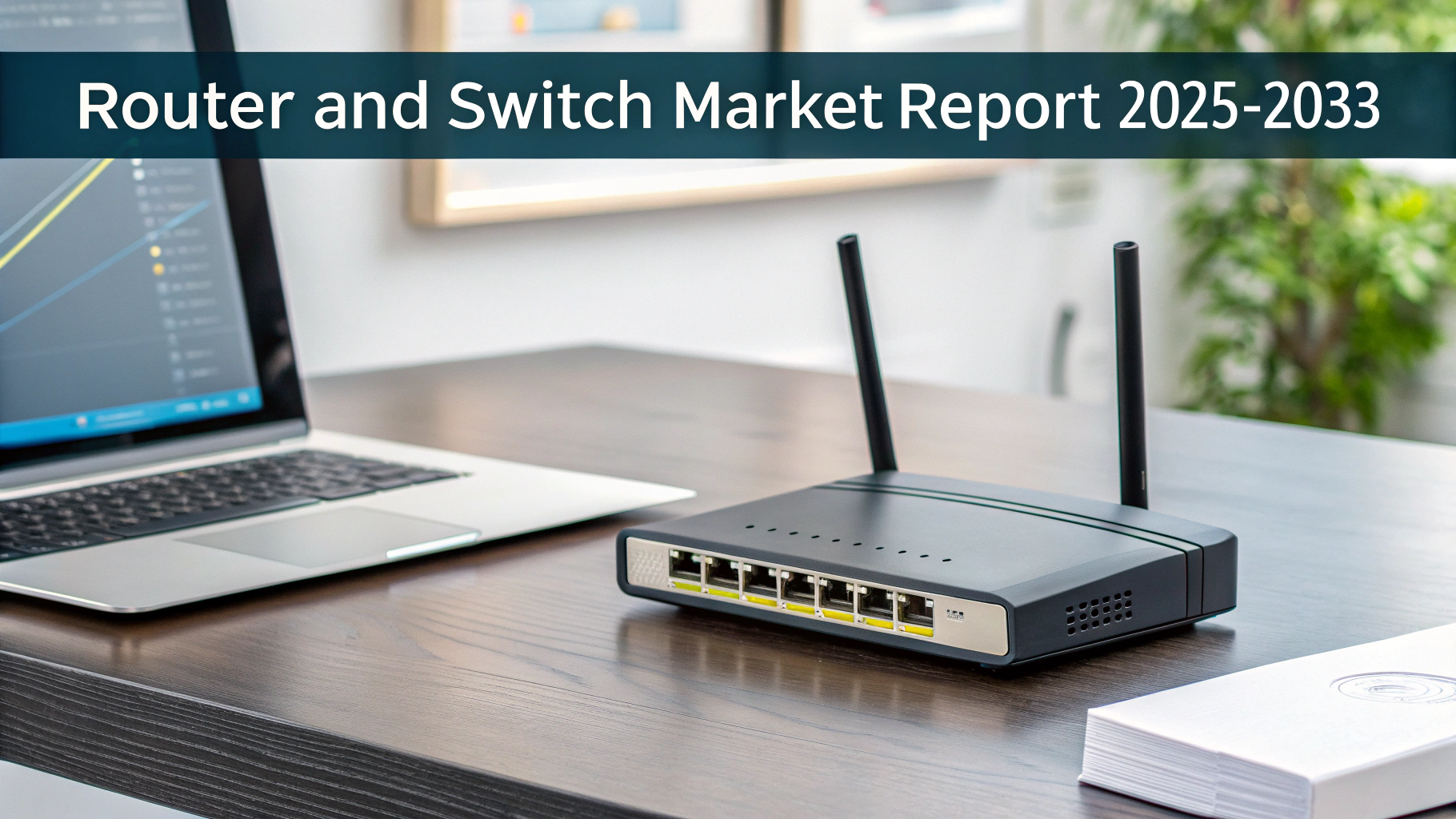Contact Lenses Market Size Worth USD 14.62 Billion in 2033 | IMARC Group

Strong 8k brings an ultra-HD IPTV experience to your living room and your pocket.
Contact lenses, which were originally conceived to restore uncomplicated vision correction, have evolved into complex and advanced lenses composed of optical engineering, manufacturing, and biomedical science. Contact lenses allow patients to experience more freedom from spectacles, improve appearances and enable patients to look and feel better about themselves. Contact lenses may ultimately serve as small health monitoring devices. It is important for consumers and companies to understand the trajectory of this dynamic market, the forces acting on this multi-faceted market, recent technological advancements, the regulatory landscape, and positive trends that will carve paths to opportunities soon.
Overview of Contact Lenses Market
Contact lenses are thin, curved lenses placed directly on the eye. Lenses are more commonly used to correct refractive errors, but the scope of their use has expanded tremendously to include cosmetic additions, therapeutic applications, and advanced diagnostics.
- Diverse Product Types: Available in various forms, including daily disposables, weekly, bi-weekly, monthly, and extended wear lenses, catering to different lifestyle needs and preferences.
- Material Innovation: Primarily made from hydrogel or silicone hydrogel, materials engineered for optimal oxygen permeability, comfort, and hydration. Rigid gas permeable (RGP) lenses offer sharp vision for specific conditions.
- Corrective and Beyond: While vision correction for myopia, hyperopia, astigmatism, and presbyopia remains core function, cosmetic and therapeutic applications are rapidly gaining traction.
- Convenience and Aesthetics: Offer a wide field of vision, freedom for sports and active lifestyles, and aesthetic appeal by eliminating need for glasses.
- Health and Hygiene Focus: Emphasis on proper lens care and replacement schedules to prevent eye infections, with daily disposables leading in hygiene and convenience.
- Technological Frontier: Future advancements point towards smart lenses capable of health monitoring, drug delivery, and augmented reality.
Market Size & Growth
Global contact lenses market size was valued at USD 9.00 Billion in 2024. Market is projected to reach USD 14.62 Billion by 2033, exhibiting a CAGR of 4.98% from 2025-2033. North America currently dominates market, holding a market share of over 38.0% in 2024. This growth is a testament to increasing prevalence of vision impairments, rising aesthetic preferences, and continuous innovation in lens technology.
- Rising Incidence of Refractive Errors: Global increase in myopia (nearsightedness), hyperopia (farsightedness), astigmatism, and presbyopia is a primary driver for vision correction solutions.
- Growing Adoption of Daily Disposable Lenses: Convenience, hygiene benefits, and reduced risk of eye infections associated with daily disposables are fueling their demand, especially among new wearers and those with active lifestyles.
- Increasing Aesthetic and Cosmetic Appeal: Rising popularity of colored and cosmetic contact lenses, particularly among younger demographics, is significantly contributing to market growth.
- Technological Advancements and Improved Comfort: Continuous innovation in lens materials (e.g., silicone hydrogel for higher oxygen permeability), designs (e.g., multifocal, toric), and wetting agents enhances comfort and expands wear time.
- Digital Eye Strain: Prolonged screen time and increased digital device usage are leading to higher instances of eye strain and vision issues, prompting more individuals to seek corrective lenses.
- Rising Disposable Incomes and Healthcare Awareness: Growing economic prosperity in emerging markets, coupled with increased awareness about eye health and availability of advanced eye care solutions, is boosting adoption rates.
Key Trends in Contact Lenses Market
Contact lenses market is characterized by dynamic innovation and evolving consumer preferences, shaping its future trajectory.
- Surge in Daily Disposable Lenses: This trend continues to dominate, driven by unparalleled convenience and superior hygiene. Daily disposables eliminate need for cleaning solutions and storage, significantly reducing risk of eye infections. Manufacturers are investing heavily in new materials for these lenses that offer enhanced comfort and oxygen permeability, making them increasingly appealing to a wider demographic, including those with sensitive eyes.
- Myopia Control Lenses: With global rise in myopia, particularly among children and adolescents, development of specialized contact lenses designed to slow its progression is a groundbreaking trend. Lenses utilizing technologies like Defocus Incorporated Multiple Segments (DIMS) or peripheral defocus are gaining significant traction as a non-invasive method for myopia management, offering a critical solution for public health.
- Smart Contact Lenses and Integrated Technologies: This represents a futuristic yet rapidly approaching frontier. Smart lenses with embedded micro-sensors are under development for various applications beyond vision correction. This includes real-time glucose monitoring for diabetics through tear fluid analysis, continuous intraocular pressure monitoring for glaucoma patients, and even augmented reality (AR) capabilities for navigation, information display, or entertainment. These innovations promise to transform contact lenses into sophisticated wearable health and information devices.
- Therapeutic and Drug-Delivering Lenses: Contact lenses are increasingly being explored as platforms for sustained ocular drug delivery. Lenses designed to release medication directly to eye over an extended period can improve treatment efficacy for conditions like glaucoma, dry eye syndrome, and allergic conjunctivitis, offering a more consistent and compliant alternative to traditional eye drops.
- Enhanced Comfort and Hydration Technologies: Dry eye remains a significant challenge for many contact lens wearers. Ongoing research focuses on developing lenses with advanced moisture retention technologies, bio-inspired materials that mimic natural tears, and improved surface wettability to provide prolonged comfort, even in challenging environments or with extended wear.
- Cosmetic and Lifestyle-Oriented Lenses: Beyond vision correction, colored and plano (non-prescription) cosmetic lenses are witnessing strong growth, especially driven by fashion trends and social media influence. Manufacturers are offering a wider range of natural-looking and vibrant colors, along with specialized patterns for theatrical or aesthetic purposes.
- UV Protection and Blue Light Filtering: Growing awareness about harmful effects of UV radiation and prolonged exposure to digital screens (blue light) is driving demand for contact lenses with built-in UV blockers and blue light filtering capabilities, offering an added layer of eye protection.
- Personalization and Customization: Advancements in manufacturing technologies, including 3D printing, are paving way for highly customized contact lenses tailored to individual eye anatomies and specific visual needs, promising superior comfort and visual acuity.
These trends collectively paint a picture of a market that is not only addressing current vision needs but actively innovating to integrate health, technology, and personal expression into daily eye care.
Industry Applications
Contact lenses have moved far beyond their initial purpose, finding diverse applications across various facets of modern life.
- Vision Correction: This remains the primary application, addressing common refractive errors:
- Myopia (Nearsightedness): Allowing clear distant vision.
- Hyperopia (Farsightedness): Enabling clear near vision.
- Astigmatism: Correcting blurred vision caused by an irregularly shaped cornea, typically with toric lenses.
- Presbyopia: Correcting age-related loss of near vision, using multifocal or bifocal lenses.
- Cosmetic Enhancement:
- Colored Contact Lenses: Changing or enhancing natural eye color for aesthetic purposes, available in both prescription and plano (non-prescription) forms.
- Costume/Novelty Lenses: Used for theatrical performances, Halloween costumes, or special events to create dramatic eye effects.
- Therapeutic Applications:
- Bandage Lenses: Used after eye surgery or injury (e.g., corneal abrasions, erosions) to protect eye, promote healing, and reduce pain.
- Drug Delivery: Lenses designed to release specific medications directly to eye over an extended period, improving treatment compliance and efficacy for conditions like glaucoma, dry eye, or ocular infections.
- Myopia Management: Specialized lenses, often featuring unique optical designs, aimed at slowing progression of myopia in children and adolescents.
- Prosthetic Lenses: Designed to mask disfigurements or irregularities in eye (e.g., due to injury, congenital defects), matching appearance of healthy eye and sometimes incorporating vision correction.
- Diagnostic and Monitoring: This is an emerging and highly promising area:
- Glucose Monitoring: Smart contact lenses with embedded sensors capable of measuring glucose levels in tear fluid, offering a non-invasive alternative for diabetic patients.
- Intraocular Pressure (IOP) Monitoring: Lenses equipped with sensors to continuously track IOP, crucial for managing glaucoma and detecting pressure spikes.
- Biomarker Detection: Future applications may involve detecting various biomarkers in tears for early diagnosis of systemic diseases or monitoring eye health conditions.
- Sports and Active Lifestyles: Contact lenses offer a wider, unobstructed field of vision compared to glasses, making them preferred choice for athletes and individuals engaged in various sports or outdoor activities. They eliminate concerns about glasses slipping, fogging, or breaking.
- Professional and Occupational Uses: In professions where glasses might be impractical or unsafe (e.g., certain medical procedures, construction, some artistic fields), contact lenses provide a clear, stable vision solution.
Evolution of contact lenses beyond simple vision correction into therapeutic tools, diagnostic devices, and fashion accessories underscores their growing versatility and integral role in modern eye care and personal well-being.
Regulatory Landscape
Contact lenses are classified as medical devices, and as such, they are subject to stringent regulations to ensure their safety, efficacy, and quality. Regulatory oversight varies by region but generally covers manufacturing, labeling, marketing, and distribution.
- United States (FDA):
- The U.S. Food and Drug Administration (FDA) regulates contact lenses as medical devices. They are typically classified as Class II or Class III devices, depending on their risk profile and intended use (e.g., daily disposables might be Class II, while smart therapeutic lenses could be Class III).
- Manufacturers must obtain premarket approval (PMA) or 510(k) clearance before marketing new lenses. This involves submitting extensive data on material biocompatibility, optical performance, oxygen permeability, safety, and clinical efficacy.
- Strict labeling requirements mandate clear instructions for use, care, replacement schedules, and potential risks.
- The FDA also oversees manufacturing practices through Good Manufacturing Practices (GMP) regulations.
- The Fairness to Contact Lens Consumers Act (FCLCA) ensures consumers have right to obtain their prescription from eye care professionals and allows them to purchase lenses from sellers other than their prescriber.
- European Union (EU - MDR):
- In the EU, contact lenses are regulated under the Medical Device Regulation (MDR) (EU) 2017/745, which replaced the Medical Device Directive (MDD). The MDR imposes more rigorous requirements for clinical evidence, post-market surveillance, and traceability.
- Contact lenses typically fall under Class IIa or IIb. Manufacturers must obtain CE mark certification, which signifies compliance with EU safety and performance requirements.
- A Notified Body (an independent third-party organization) often assesses compliance for higher-risk devices.
- The MDR emphasizes clinical data, risk management, and comprehensive post-market follow-up.
- Other Key Regions:
- Japan: Regulated by the Pharmaceuticals and Medical Devices Agency (PMDA) under the Pharmaceutical and Medical Device Act (PMD Act).
- China: Regulated by the National Medical Products Administration (NMPA).
- Canada: Regulated by Health Canada.
- Australia: Regulated by the Therapeutic Goods Administration (TGA).
- International Standards and Guidelines:
- ISO Standards: International Organization for Standardization (ISO) develops various standards relevant to contact lenses, such as ISO 18369 (Ophthalmic optics — Contact lenses), which covers specifications for contact lens materials, optical properties, and testing methods. While not legally binding, these standards are often adopted or referenced by national regulations.
- ICH Guidelines: The International Council for Harmonisation of Technical Requirements for Pharmaceuticals for Human Use (ICH) provides guidelines that can influence regulatory approaches for therapeutic contact lenses, especially concerning clinical trials and quality.
- Future Regulatory Challenges:
- Smart Contact Lenses: The integration of electronics, sensors, and drug delivery capabilities into contact lenses presents significant new regulatory challenges. Regulators will need to address data privacy, cybersecurity, power source safety, and long-term biocompatibility of these advanced devices. The lines between medical device and consumer electronics may blur, requiring new regulatory frameworks.
- Myopia Control Lenses: As these lenses gain wider acceptance, specific guidelines for their long-term efficacy and safety, particularly in pediatric populations, are continuously being refined.
- Environmental Concerns: While not strictly regulatory for product approval, increasing environmental awareness may lead to future regulations on contact lens waste (e.g., microplastics) and packaging, potentially driving demand for more biodegradable materials or better recycling solutions.
Compliance with these diverse and evolving regulatory frameworks is a significant undertaking for contact lens manufacturers, requiring substantial investment in research, testing, and quality assurance to ensure products meet global safety and performance benchmarks.
Challenges in Contact Lenses Market
Despite its robust growth, contact lenses market faces several challenges that require continuous innovation and strategic solutions.
- Eye Infections and Hygiene Concerns: One of the most significant challenges is the risk of contact lens-related eye infections, particularly microbial keratitis. Improper lens care, extended wear beyond recommended schedules, sleeping in lenses not designed for overnight use, and poor hygiene practices are major contributors. This necessitates ongoing public education campaigns and continued development of more infection-resistant lens materials and care solutions.
- Discomfort and Dry Eye Syndrome: Many contact lens wearers experience discomfort, dryness, or irritation, leading to discontinuation. Factors like reduced tear film stability, environmental conditions, prolonged screen time, and material properties can contribute. Manufacturers are constantly working on new materials (e.g., advanced silicone hydrogels) and wetting agents to improve lens hydration and comfort throughout the day, but it remains a key barrier to long-term wear for many.
- Cost and Affordability: While daily disposables offer convenience, their cumulative cost over a year can be higher than reusable lenses or eyeglasses, making them less accessible for price-sensitive consumers, particularly in developing markets. The high cost of specialized lenses (e.g., multifocal, toric, smart lenses) can also limit their adoption.
- Competition from Corrective Surgeries (LASIK, PRK): Refractive surgeries like LASIK and PRK offer a permanent solution to vision correction, providing a competitive alternative to contact lenses for suitable candidates. While not everyone is a candidate for surgery, and some prefer non-invasive options, the perceived long-term convenience of surgery can draw away potential contact lens wearers.
- Misinformation and Improper Usage: Availability of contact lenses online and through unauthorized channels can lead to improper fitting, use of expired lenses, or purchase of counterfeit products, increasing risk of eye health complications. Educating consumers about importance of professional eye exams and proper care remains critical.
- Environmental Impact (Plastic Waste): Contact lenses and their packaging contribute to plastic waste. While the volume is small compared to other plastics, growing environmental awareness is leading to concerns about lens disposal and microplastic pollution. This pushes manufacturers to explore more sustainable materials, recycling programs, and eco-friendly packaging.
- Technological Complexity and R&D Costs: Developing advanced contact lenses, especially smart lenses with integrated electronics or drug delivery capabilities, requires significant investment in research and development, complex manufacturing processes, and rigorous regulatory approval, leading to high upfront costs and extended time-to-market.
- Global Regulatory Harmonization: Variations in regulatory requirements across different regions (e.g., FDA in the U.S., MDR in the EU) can create complexities and additional costs for manufacturers seeking to launch products globally, hindering market expansion.
- Aging Population with Presbyopia: While an opportunity, presbyopia also presents a challenge. Multifocal contact lenses can be more complex to fit and may not provide optimal vision for all activities for every patient, leading to some dissatisfaction and dropouts.
Addressing these challenges requires a multi-faceted approach, including continued innovation in materials and designs, robust consumer education, strategic pricing models, and collaboration with eye care professionals to ensure safe and effective lens use.
Future Opportunities
Contact lenses market is poised for transformative growth, driven by a convergence of technological advancements, evolving healthcare needs, and changing consumer lifestyles.
- Integration of Smart Technologies and Health Monitoring: This is arguably the most significant future opportunity. Smart contact lenses equipped with biosensors could non-invasively monitor various health parameters from tear fluid, such as glucose levels for diabetics, intraocular pressure for glaucoma patients, or even early indicators of systemic diseases. Beyond diagnostics, they could deliver real-time data to smartphones or healthcare providers, revolutionizing personalized health management and preventative care.
- Drug Delivery Platforms: Contact lenses as sustained drug delivery systems offer immense potential. They can provide a consistent and localized release of medication for chronic eye conditions (e.g., glaucoma, dry eye, infections), improving patient compliance and therapeutic efficacy compared to traditional eye drops. This opens new avenues for treating complex ocular diseases.
- Augmented Reality (AR) and Heads-Up Displays: The development of AR-enabled contact lenses could seamlessly overlay digital information onto a user's natural field of vision, transforming how we interact with world. Applications range from navigation and real-time language translation to professional uses in surgery or engineering, blending digital and physical realities.
- Advanced Myopia Control Solutions: With global myopia rates surging, particularly in children, continued innovation in myopia-controlling contact lenses represents a critical and expanding market. Future lenses will likely offer even greater efficacy, comfort, and accessibility, providing a crucial tool for managing this global health challenge.
- Personalized and Custom-Fit Lenses: Advancements in 3D printing and additive manufacturing could enable highly customized contact lenses tailored precisely to individual eye topography and refractive needs. This level of personalization could offer unparalleled comfort, fit, and visual acuity, particularly for patients with complex corneal conditions.
- Next-Generation Materials for Enhanced Comfort and Oxygenation: Ongoing research into novel materials that offer even higher oxygen permeability, superior hydration, and reduced protein/lipid deposition will continue to improve wearer comfort and eye health, addressing one of current market's biggest challenges. This includes bio-inspired materials that mimic natural eye surfaces.
- Sustainable and Eco-Friendly Lenses: Growing environmental consciousness will drive demand for more sustainable contact lens solutions. Opportunities exist in developing biodegradable lenses, recyclable packaging, and robust recycling programs to mitigate environmental impact of plastic waste associated with current lenses.
- Therapeutic Lenses for Post-Surgical Care and Wound Healing: Specialized lenses designed to promote healing after ocular surgeries (e.g., LASIK, cataract surgery) or for corneal injuries could see increased adoption, offering protective barriers and potentially delivering healing agents.
- Expanding Reach in Emerging Markets: Rising disposable incomes, increasing awareness about eye health, and improving access to eye care professionals in developing economies present significant untapped market potential for contact lenses, particularly as affordability improves.
- Integration with Tele-optometry and AI: Remote eye care and AI-powered diagnostic tools could streamline contact lens prescription and follow-up processes, making lenses more accessible to populations in remote areas or those with limited access to traditional eye care. AI could also aid in personalized lens recommendations based on lifestyle and physiological data.
Embracing these opportunities will not only drive significant market growth but also redefine role of contact lenses, transforming them from mere vision correctors into multi-functional health and lifestyle devices.
Conclusion
The contact lenses market is experiencing a great change, evolving from a traditional method of vision correction to a complex intersection of a medical device, fashion accessory, and future health monitor. Due to the worldwide increase in vision impairments alongside a rising demand for convenience and aesthetics, and continuously new technological advancements contact lenses will see solid market growth through 2033. While issues associated with eye health, costs, and environmental concerns remain, the industry is deeply committed to innovation in the areas of smart lenses, myopia control, and new materials, to allay these issues. Given that regulations will take time to adapt to complex new technologies, and that contact lenses will become increasingly important in sustaining ocular health and quality of life, they will enable a clearer and connected future.
Note: IndiBlogHub features both user-submitted and editorial content. We do not verify third-party contributions. Read our Disclaimer and Privacy Policyfor details.




